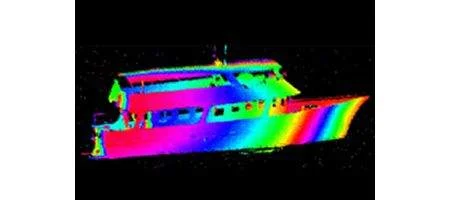Unmanned Navy aircraft will soon be able to distinguish small pirate boats from other vessels, says the Office of Naval Research (ONR).

It’s soon to start testing a new sensor with advanced automatic target recognition software.
The Multi-Mode Sensor Seeker (MMSS) carries high-definition cameras, mid-wave infrared sensors and laser-radar (LADAR) technology, and will be placed on a robotic helicopter called Fire Scout.
“Sailors who control robotic systems can become overloaded with data, often sifting through hours of streaming video searching for a single ship,” says Ken Heeke, program officer in ONR’s Naval Air Warfare and Weapons Department.
“The automatic target recognition software gives Fire Scout the ability to distinguish target boats in congested coastal waters using LADAR, and it sends that information to human operators, who can then analyze those vessels in a 3D picture.”
Target recognition algorithms will examine the 3D data collected by the LADAR, comparing the 3D imagery to vessel templates or schematics stored in the system’s memory.
“The 3D data gives you a leg up on target identification,” says Dean Cook, principal investigator for the MMSS program at Naval Air Warfare Center Weapons Division (NAWCWD).
“Infrared and visible cameras produce 2D pictures, and objects in them can be difficult to automatically identify. With LADAR data, each pixel corresponds to a 3D point in space, so the automatic target recognition algorithm can calculate the dimensions of an object and compare them to those in a database.”
The Navy’s already tested the algorithms in shore-based systems against vessels at sea. The software’s now being integrated into a BRITE Star II turret, for airborne testing aboard a manned test helicopter.
It’ll test it out on groups of around seven small boats in a military sea range off the California coast later this summer.






